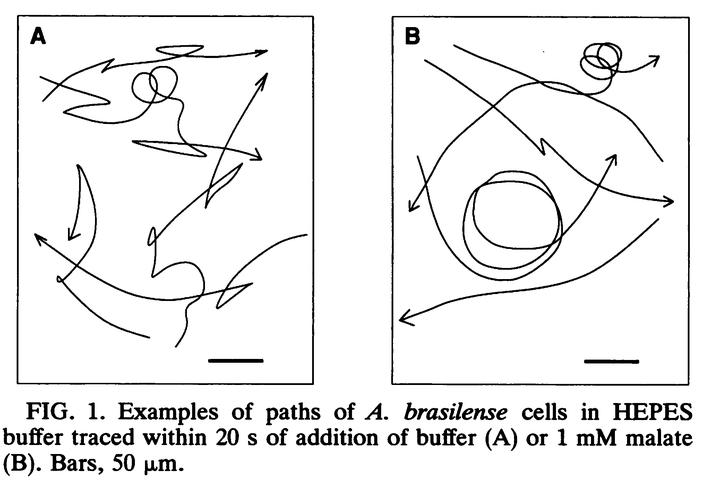Motility, chemokinesis, and methylation-independent chemotaxis in Azospirillum brasilense

Abstract
Observations of free-swimming and antibody-tethered Azospirillum brasilense cells showed that their polar flagella could rotate in both clockwise and counterclockwise directions. Rotation in a counterclockwise direction caused forward movement of free-swimming cells, whereas the occasional change in the direction of rotation to clockwise caused a brief reversal in swimming direction. The addition of a metabolizable chemoattractant, e.g., malate or proline, had two distinct effects on the swimming behavior of the bacteria: (i) a short-term decrease in reversal frequency from 0.33 to 0.17 s-1 and (ii) a long-term increase in the mean population swimming speed from 13 to 23 microns s-1. A. brasilense therefore shows both chemotaxis and chemokinesis in response to temporal gradients of some chemoeffectors. Chemokinesis was dependent on the growth state of the cells and may depend on an increase in the electrochemical proton gradient above a saturation threshold. Analysis of behavior of a methionine auxotroph, assays of in vivo methylation, and the use of specific antibodies raised against the sensory transducer protein Tar of Escherichia coli all failed to demonstrate the methylation-dependent pathway for chemotaxis in A. brasilense. The range of chemicals to which A. brasilense shows chemotaxis and the lack of true repellents indicate an alternative chemosensory pathway probably based on metabolism of chemoeffectors.